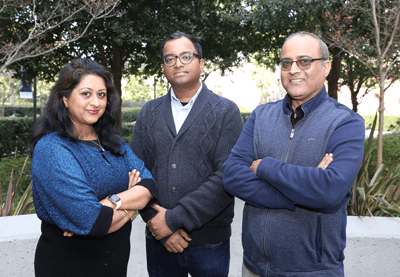Call it Mighty Mouse: Breakthrough leaps Alzheimer's research hurdle
UCI-led study reveals crucial mechanisms contributing to the disease

Irvine, Calif., July 31, 2019 — University of California, Irvine researchers have made it possible to learn how key human brain cells respond to Alzheimer’s, vaulting a major obstacle in the quest to understand and one day vanquish it. By developing a way for human brain immune cells known as microglia to grow and function in mice, scientists now have an unprecedented view of crucial mechanisms contributing to the disease.
The team, led by Mathew Blurton-Jones, associate professor of neurobiology & behavior, said the breakthrough also holds promise for investigating many other neurological conditions such as Parkinson’s, traumatic brain injury, and stroke. The details of their study have just been published in the journal Neuron. Link to study: https://www.cell.com/neuron/fulltext/S0896-6273(19)30600-2.
The scientists dedicated four years to devising the new rodent model, which is considered “chimeric.” The word, stemming from the mythical Greek monster Chimera that was part goat, lion and serpent, describes an organism containing at least two different sets of DNA.
To create the specialized mouse, the team generated induced pluripotent stem cells, or iPSCs, using cells donated by adult patients. Once created, iPSCs can be turned into any other type of cell. In this case, the researchers coaxed the iPSCs into becoming young microglia and implanted them into genetically-modified mice. Examining the rodents several months later, the scientists found about 80-percent of the microglia in their brains was human, opening the door for an array of new research.
“Microglia are now seen as having a crucial role in the development and progression of Alzheimer’s,” said Blurton-Jones. “The functions of our cells are influenced by which genes are turned on or off. Recent research has identified over 40 different genes with links to Alzheimer’s and the majority of these are switched on in microglia. However, so far we’ve only been able to study human microglia at the end stage of Alzheimer’s in post-mortem tissues or in petri dishes.”
In verifying the chimeric model’s effectiveness for these investigations, the team checked how its human microglia reacted to amyloid plaques, protein fragments in the brain that accumulate in people with Alzheimer’s. They indeed imitated the expected response by migrating toward the amyloid plaques and surrounding them.
“The human microglia also showed significant genetic differences from the rodent version in their response to the plaques, demonstrating how important it is to study the human form of these cells,” Blurton-Jones said.
“This specialized mouse will allow researchers to better mimic the human condition during different phases of Alzheimer’s while performing properly-controlled experiments,” said Jonathan Hasselmann, one of the two neurobiology & behavior graduate students involved in the study. Understanding the stages of the disease, which according to the Alzheimer’s Association can last from two to 20 years, has been among the challenges facing researchers.
Neurobiology & behavior graduate student and study co-author Morgan Coburn said: “In addition to yielding vital information about Alzheimer’s, this new chimeric rodent model can show us the role of these important immune cells in brain development and a wide range of neurological disorders.”
Blurton-Jones is a member of the Sue & Bill Gross Stem Cell Research Center and UCI MIND.
Along with the UCI School of Biological Sciences researchers, scientists with the UC San Diego and McGill University in Montreal assisted with the work. The National Institutes of Health and the California Institute for Regenerative Medicine provided primary funding.
About the University of California, Irvine: Founded in 1965, UCI is the youngest member of the prestigious Association of American Universities. The campus has produced three Nobel laureates and is known for its academic achievement, premier research, innovation and anteater mascot. Led by Chancellor Howard Gillman, UCI has more than 36,000 students and offers 222 degree programs. It’s located in one of the world’s safest and most economically vibrant communities and is Orange County’s second-largest employer, contributing $5 billion annually to the local economy. For more on UCI, visit www.uci.edu.
Media access: Radio programs/stations may, for a fee, use an on-campus ISDN line to interview UCI faculty and experts, subject to availability and university approval. For more UCI news, visit wp.communications.uci.edu. Additional resources for journalists may be found at communications.uci.edu/for-journalists.


